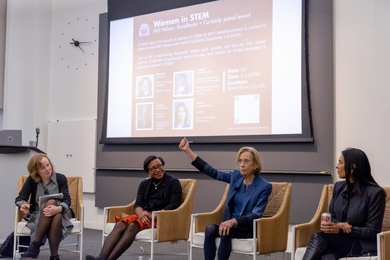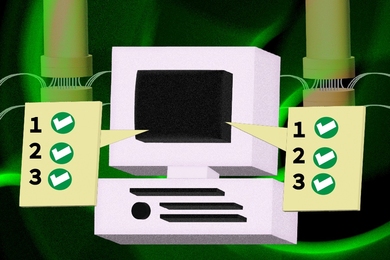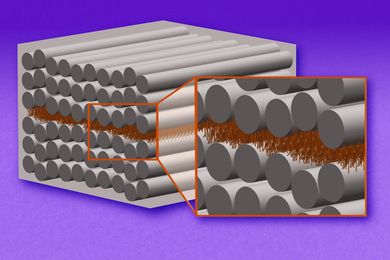Her down-to-earth descriptions of the comet crash and contagious excitement made Heidi Hammel an instant media star.
In her role as a Hubble spokeswoman, Dr. Hammel participated in daily press conferences during the week of the impacts in which she described, among other things, Jupiter's "black eyes, big splotches, and bruises" and told reporters that she almost felt sorry for the planet.
The press was in love. Dr. Hammel was quoted in newspapers around the country (and probably the world), and at least three newspapers published profiles on her (the Chronicle of Higher Education, the Boston Herald and USA Today).
How did Dr. Hammel feel about all the attention? "You just don't think about it. When your job is to report what you're doing and seeing, that's what you do," she said.
During the week of the impact, she said, she wasn't aware of the extent of the interest. "We didn't have time to read newspapers or watch the news," she said. As a result, she was completely surprised when she woke up one morning at her hotel in Maryland, picked up her complimentary copy of USA Today, "and there was an article about me personally!" (The USA Today reporter had interviewed three of her colleagues at MIT.) Further, she said, "when I called my mother later she told me that her phone was ringing off the hook, and my brother was called [by the press] too."
The media attention is all worthwhile, Dr. Hammel said, "as long as the word gets out that MIT people aren't all nerds." To that end she was especially pleased by what graduate student Cathy Olkin told USA Today for their profile: "[Heidi]'s a fun person. I don't think she's a nerd. She likes the Grateful Dead. Most nerds wouldn't be considered Grateful Dead fans."
A version of this article appeared in the August 31, 1994 issue of MIT Tech Talk (Volume 39, Number 3).





